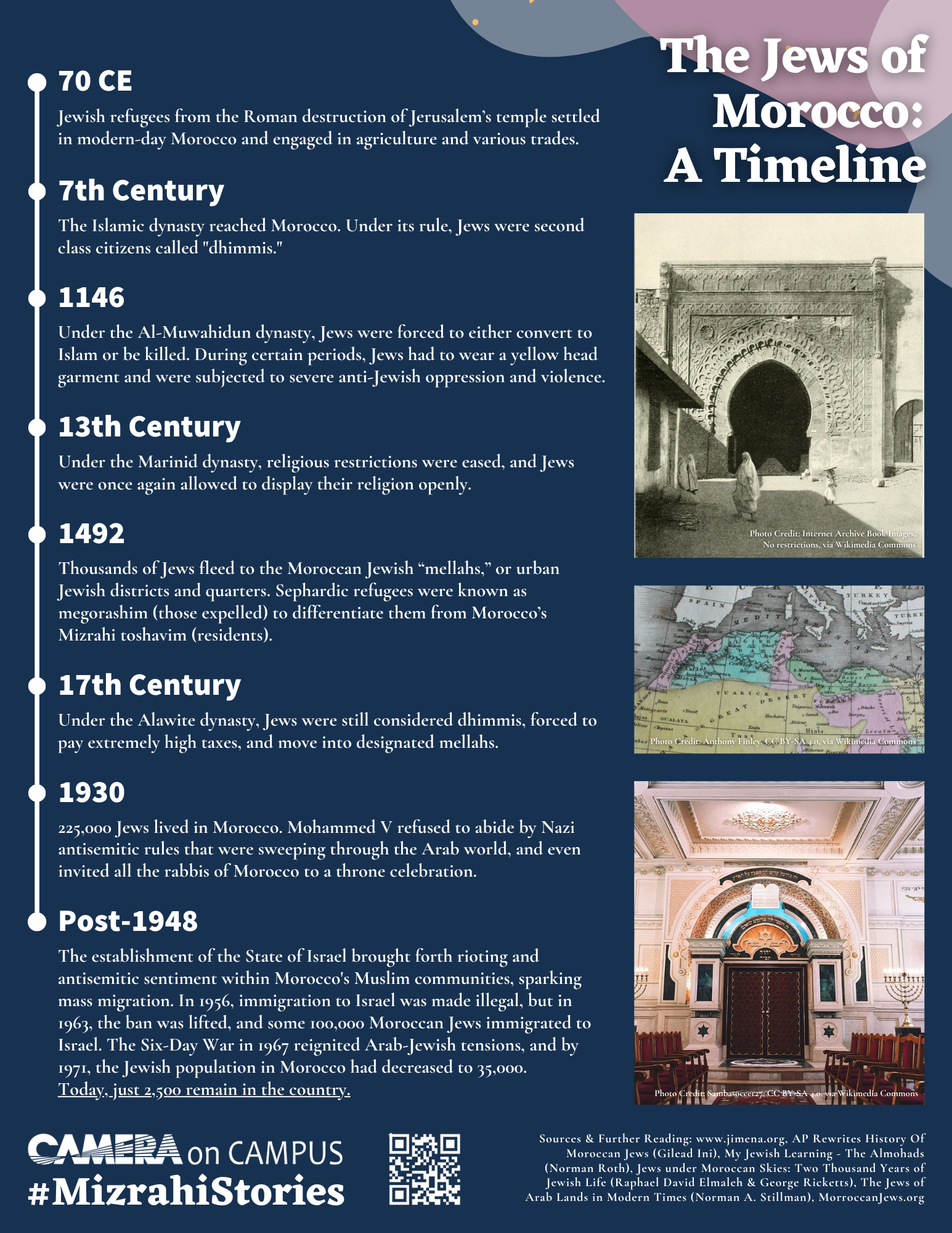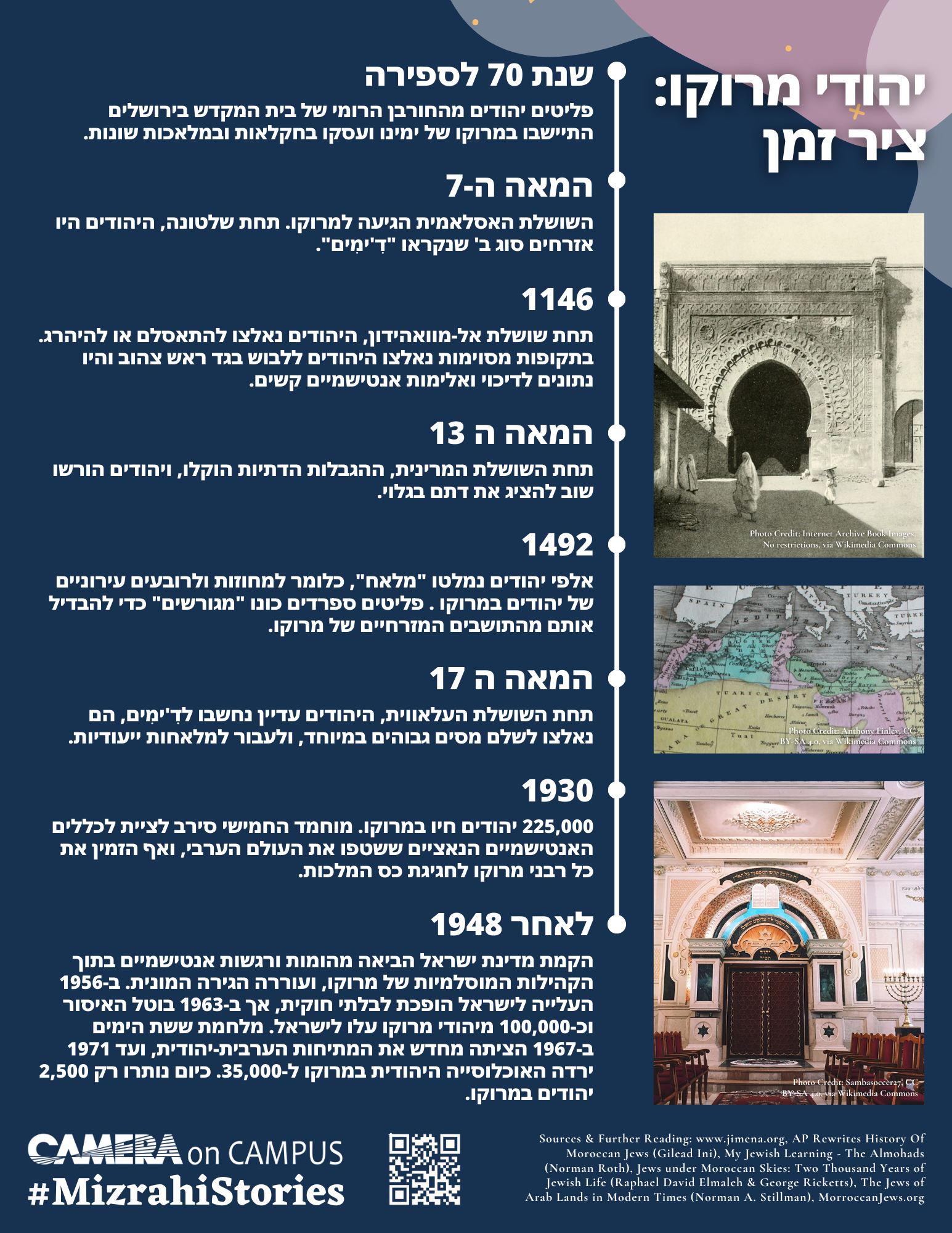Still Living: Remembering Morocco��’s Jews
When I think about Israeli culture, I think of startups, I think of gorgeous museums with modern art exhibits, of Sabich, falafel, and hip new musicians, of the Tel Aviv boardwalk and the new lineup of hit Israeli TV shows on Netflix. Israel has a rich culture, and yet often we see it as separate from all of the Jewish history that occurred outside the Holy Land itself. For thousands of years, the Jewish people have lived in the Diaspora, outside the land of Israel. From the moment the first Jews were exiled from the land of Israel in 600 BC a myriad of new cultures with incredible facets began to form. Judaism today is a combination of a diverse array of experiences, traditions and rich cultural heritage that all come together to create a vibrant culture and many deeply rooted traditions, connected to countries the world over.
Growing up, I learned in Jewish schools and at home about the dispersion of Jews from the land of Israel, most prominently following the Roman conquest of the land. In my classes we spoke in depth about the migration of Jews to countries throughout the world, talking about the adaptation of the Jewish religion to life outside the holy land, about the famous sages, and about the golden eras for Jews throughout Europe and later in the Muslim kingdoms of Iberia and North Africa. However, the past century of Jewish history has played an incredibly influential role in my Jewish education. As I look back I think of the culmination that was going on the March of the Living. In one trip we marched out of Auschwitz in Poland and subsequently flew to Israel to celebrate our survival and return home to the land of Israel. This past summer I went on what I felt to be a parallel journey to my experience of the March of the Living — in Morocco.
I spent two months visiting different parts of Morocco, and in each place, I would wait to hear the awkwardly inserted bit about the Jews. For the most part, these were honorable mentions. Like “the Jews lived here, close to the king’s palace” or “the Muslims, the Berbers, and the Jews were good friends and always got along well”, and importantly, “the Moroccan constitution gives Jews special permission to be tried in Jewish courts according to Jewish law, a right which is not even present in Israel.” It was a thrill, learning a new and enchanting side of the history of my people.
The king of the country has a personal connection with the Jewish community. And yet, most of the references to the Jewish community were solely historical. Seldom did we hear anything spoken about the contemporary community.
Sadly, this is because only around one percent of Morocco’s pre-1948 Jews remain. In a country that was once home to more than 250,000 Jewish individuals only a community numbering less than 5,000 remains. I visited the historical towns and remaining communities and the dramatic loss was all too obvious. In the south, I visited a city by the name of Essaouira. On arriving, I looked for a place to spend Shabbat, hoping maybe to connect with a Jewish family or two that remained. I was shocked to discover that less than a century ago this dreamy seaside town had been home to a Jewish population large enough that they were not even considered a minority group. According to some locals, they had even been a majority in the town at some point. In the decades after 1948 Essaouira’s Jews left and the Jewish population dwindled into the single digits. Today many Jewish homes in the city are nothing more than rubble, while some of them are still used today as private homes, and one even as a hotel. Walking through the streets I saw the simple Jewish stars above door frames, among the few indications of the strong community that existed not so long ago in that very place.
Jews arrived in Morocco more than 500 years ago, living and working alongside their mostly Muslim neighbors. Within a few decades of the establishment of the State of Israel, they had all but disappeared. I have heard personal stories from friends of their family members being harassed. Even a story of a Jewish grandfather that was lynched by an angry mob in a small town in the Atlas Mountains. This parallels a larger trend throughout the Muslim world; it makes me think of the stories of friends’ parents who left their homes in the Middle East with nothing more than the clothes on their backs. Morocco was not alone in this sad wave of anti-Jewish hatred that swept the Arab world in the twentieth century. This hate led to the disappearance of 99.5% of the Arab world’s Jewish population. Many of these Jews were kicked out of their ancestral lands. They were forced to leave everything, and in many instances died trying to get their families to safety. Many of them, similarly to the world’s current refugees, experienced difficulties when restarting their lives in new countries.
For centuries, Jews had prospered in Arab societies with nothing more than occasional reminders that they were different. This all changed in 1948: the only difference being that they now had a new state they could call home. Many of these Jews did end up in the state of Israel but in 1948 Zion still remained an intangible dream. Yet they were suddenly the victims of hate because of a conflict far away. Standing in a large blue room, in the restored Chaim Pinto synagogue in Essaouira I felt one step closer to my roots. I conducted a prayer service, serving both as the cantor and as the crowd. I felt spiritually connected to the generations of Jews who had for centuries called Morocco home, and I felt closer to my own roots, as if I had just filled in another missing piece of the puzzle of Jewish history. I had the opportunity to experience a piece of the Jewish past that I believe every Jew should learn about. Just as I marched through Poland, learning about the Jewish communities that once were, so too opportunities should be expanded to expose more of our community to the incredible heritage and culture of Moroccan Jews, among all the other Jewish experiences that compose the Jewish community today.



